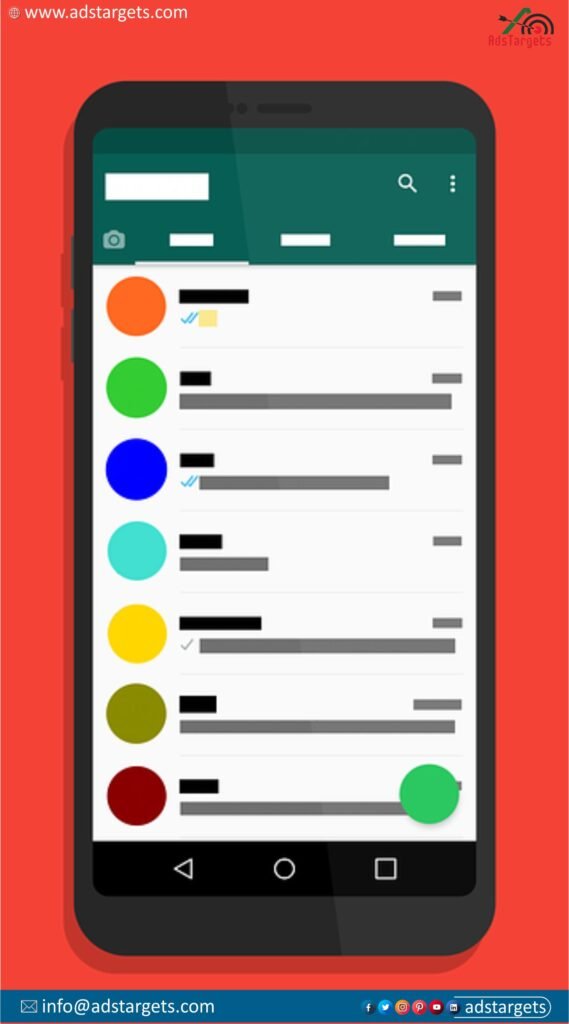On mobile-friendly landing page designs, recent statistics say the rise of mobile usage devices accounts for over 50% of website traffic worldwide. This trend is expected to continue, making it essential for businesses to adapt their online presence to cater to mobile users.
The importance of mobile-friendly landing page designs cannot be overstated in today’s digital sphere.
With the majority of users accessing websites through mobile devices, a responsive and user-friendly landing page is no longer a luxury, but a necessity.
A mobile-friendly landing page design is the first impression your brand makes on potential customers, and it can make or break your conversion rates.
Imagine landing on a website that is slow, cluttered, and difficult to navigate on your mobile device. You will likely bounce off and never return. On the other hand, a mobile-friendly landing page that is fast, sleek, and easy to use will keep you engaged and increase the chances of conversion.
In this article, we will explore the key elements of mobile-friendly landing page designs, the benefits of having one, and provide best practices for mobile-friendly landing page that drives conversions and enhances your brand’s online presence.
Whether you are a veteran marketer or a business owner looking to improve your online presence, this article will provide you with the insights you need to create a mobile-friendly landing page design that resonates with your audience. Sit back and enjoy the ride.

Table of Contents
ToggleWhat are the Key Elements of Mobile-Friendly Landing Page Designs?
#1. Responsive Design:
Responsive design ensures that your landing page automatically adjusts to fit the screen size of any device. This approach provides a consistent user experience across desktops, tablets, and smart phones. Use flexible grids, fluid images, and CSS media queries to create a layout that adapts to various screen sizes.
#2. Simplified Navigation:
This is one of the key components of mobile-friendly landing page design because mobile screens are smaller, so it is crucial to streamline your navigation. Use a minimalistic approach with clear and concise menus. Consider incorporating a hamburger menu (three horizontal lines) that expands to reveal navigation options, keeping the interface clean and uncluttered.
#3. Fast Loading Times:
Mobile users are often on the go and have limited patience for slow-loading pages. Optimize your landing page for speed by compressing images, minimizing HTTP requests, and leveraging browser caching. Aim for a loading time of less than three seconds to keep visitors engaged.
#4. Clear and Concise Content:
Mobile users typically skim through content quickly. Use short paragraphs, bullet points, and clear headings to make your content easily digestible. Ensure your most important information and CTAs are prominently displayed above the fold. This mobile-friendly landing page design component will pave way for your website over others.
#5. Touch-Friendly Elements:
This mobile-friendly landing page design ensures all interactive elements, such as buttons and links, are large enough to be easily tapped with a finger. Avoid small fonts and tiny clickable areas that can frustrate users and lead to accidental clicks.
Why does Mobile-Friendly Landing Pages Designs Matter?
#1. Increasing Mobile Usage:
The surge in mobile device usage is undeniable. As of 2023, mobile devices account for over 50% of global internet traffic. This shift in user behavior means that a significant portion of your audience is likely accessing your website from a smartphone or tablet.
Failing to provide a seamless mobile experience can lead to high bounce rates and lost opportunities.
#2. Improved User Experience:
Mobile-friendly landing page designs ensure that visitors have a smooth and enjoyable experience regardless of the device they’re using. A well-optimized landing page adjusts to different screen sizes, providing easy navigation, readable text, and accessible CTAs (Call-to-Actions), which can significantly enhance user satisfaction and engagement.
#3. SEO Benefits:
Search engines like Google prioritize mobile-friendly landing page design websites in their rankings. A responsive design can improve your site’s SEO performance, helping you achieve higher visibility and attracting more organic traffic.
#4. Increased Conversion Rates:
A mobile-friendly landing page design can directly impact your conversion rates. When users can easily navigate, understand, and interact with your content on their mobile devices, they are more likely to complete desired actions, whether it is signing up for a newsletter, making a purchase, or filling out a form.
Best Practices for Mobile-Friendly Landing Page Designs
Creating a mobile-friendly landing page is essential for capturing the attention of on-the-go users and maximizing conversion rates. Here are some best practices to ensure your landing page is optimized for mobile devices:
#1. Optimize Images and Media:
High-quality visuals are crucial for engaging users, but they can also slow down your page. Use responsive images that adjust to different screen sizes and resolutions. Compress images without sacrificing quality, and consider using modern formats like WebP for better performance.
#2. Use Mobile-Friendly Forms:

Forms are a common element on landing pages, whether for lead generation, subscriptions, or purchases. Design forms with the mobile user in mind by:
#1. Keeping them short and straightforward.
#2. Using input types that bring up the appropriate keyboard (e.g., numeric keyboard for phone numbers).
#3. Implementing autofill features to speed up the process.
#3. Prioritize Key Information:
Mobile users often scroll quickly, so prioritize the most critical information at the top of your landing page. Use engaging headlines, compelling subheadings, and concise text to capture attention immediately. Ensure your primary CTA is easily visible and accessible without excessive scrolling.
#4. Leverage Visual Hierarchy:
Use visual hierarchy to guide users through your content intuitively. Highlight important elements like CTAs using contrasting colors, larger fonts, and strategic placement. This approach helps direct users’ attention to key actions you want them to take.
#5. Test on Multiple Devices (A/B Testing):
Ensure you have a mobile-friendly landing page design that performs well across a variety of devices and browsers. Use tools like Google’s Mobile-Friendly Test and BrowserStack to test your design on different screen sizes, operating systems, and browsers. Regular testing helps identify and fix issues before they impact user experience.
#6. Responsive Design:
Ensure you have mobile-friendly landing page design that automatically adjusts to various screen sizes and orientations. Use flexible grids, fluid images, and CSS media queries. Maintain a consistent experience across different devices, so users can easily navigate regardless of the screen size.
#7. Simplified Navigation:
Use simplified navigation menus, such as hamburger menus, to keep the interface clean. Also, ensure buttons and links are large enough to be easily tapped with a finger. Avoid small fonts and tiny clickable areas.
#8. Fast Loading Times:
Compress images and videos to reduce load times without sacrificing quality. Use modern formats like WebP. Reduce the number of HTTP requests by combining files and using inline elements where appropriate. Leverage browser caching to store frequently accessed files locally.
#9. Touch-Friendly Elements:
Your mobile-friendly landing page design buttons should be large enough for easy tapping, with enough space around them to avoid accidental clicks. Use appropriate input types for forms (e.g., numeric keyboard for phone numbers) to enhance usability.
#10. Strong Calls-to-Action (CTAs):
Ensure CTAs are prominent and easily accessible, preferably above the fold. Use clear, action-oriented language for CTAs, such as “Sign Up Now” or “Get Started.”
#11. Mobile SEO Optimization:
Optimize your landing page with relevant keywords to improve search engine visibility. Ensure meta descriptions and titles are concise and compelling for mobile search results. If applicable, optimize for local search queries to attract nearby users.
#12. Accessibility:
Ensure your mobile-friendly landing page design is accessible to all users, including those with disabilities. Use alt text for images, clear labels for form fields, and ensure compatibility with screen readers. Design for keyboard navigation to accommodate users who rely on it.
#13. Analytics and Monitoring:
For the best mobile-friendly landing page design, use tools like Google Analytics to monitor user behavior and identify areas for improvement. Collect user feedback to understand pain points and enhance the user experience.
#14. Avoid Pop-Ups:
Avoid using intrusive pop-ups that can frustrate mobile users and lead to higher bounce rates. Use less disruptive methods, like banners or in-line forms, to capture user information or promote offers.
Examples of Effective Mobile-Friendly Landing Pages
#1. Dropbox:
Dropbox’s mobile-friendly landing page design is a prime example of simplicity and clarity. It features a clean design with a prominent CTA button, concise text, and minimal distractions. The page loads quickly and adjusts seamlessly to different screen sizes.
#2. Airbnb:
Airbnb’s mobile-friendly landing page design effectively uses high-quality images and a straightforward layout. The search functionality is prominently displayed, making it easy for users to find and book accommodations. The design is responsive and provides an excellent user experience on mobile devices.
#3. Shopify:

Shopify’s mobile-friendly landing page design focuses on a clear value proposition and a strong CTA. The page includes customer testimonials and social proof elements that build trust and encourage conversions. The design is optimized for quick loading and easy navigation.
Advanced Strategies for Mobile-friendly Landing Page Optimization
#1. Implement AMP (Accelerated Mobile Pages):
AMP is an open-source project designed to improve mobile page loading speeds. By implementing AMP, you can create lightweight versions of your landing pages that load almost instantly on mobile devices, enhancing user experience and potentially improving your search rankings.
#2. Utilize Progressive Web Apps (PWAs):
PWAs combine the best of web and mobile apps, offering fast loading times, offline access, and an app-like experience. Converting your landing page into a PWA can provide a seamless and engaging experience for mobile users, increasing the likelihood of conversions.
#3. Personalized Content:
Leverage data and analytics to deliver personalized content based on user behavior, preferences, and location. Personalized landing pages can significantly improve engagement and conversion rates by providing relevant and targeted information to each user.
#4. Integrate Mobile Payments:
For e-commerce landing pages, integrating mobile payment options like Apple Pay, Google Wallet, and PayPal can streamline the checkout process. Simplified payment methods reduce friction and enhance the likelihood of completing a purchase on mobile devices.
#5. Voice Search Optimization:
With the increasing use of voice assistants, optimizing your landing page for voice search can help you capture more mobile traffic. Use natural language, long-tail keywords, and structured data to improve your chances of appearing in voice search results.
What are the Common Pitfalls to Avoid when Designing a Good Mobile-Friendly Landing Page?
#1. Ignoring Mobile Analytics:
Failing to analyze mobile-specific data can lead to missed opportunities for optimization. Use tools like Google Analytics to track mobile user behavior, identify pain points, and make data-driven improvements to your landing page.
#2. Overloading with Content:
While it is essential to provide valuable information, overloading your landing page with too much content can overwhelm mobile users. Focus on delivering concise, relevant content that guides users towards your CTA.
#3. Neglecting A/B Testing:
A/B testing is crucial for understanding what works best for your audience. Regularly test different versions of your landing page to identify the most effective design elements, messaging, and CTAs for mobile users.
#4. Poor Contrast and Readability:
Poor contrast and readability gives birth to poor mobile-friendly landing page designs. Ensure that text is easily readable on mobile screens, and that is been mobile-friendly. Use sufficient contrast between text and background colors, choose legible fonts, and avoid small font sizes that require zooming in.
#5. Forgetting About Accessibility:
Designing for accessibility ensures that all users, including those with disabilities, can interact with your landing page. Use alt text for images, provide clear labels for form fields, and ensure your page is navigable via keyboard and screen readers.
Conclusion
In the digital age, mobile-friendly landing page designs are essential for capturing and converting your audience. By adhering to the principles of responsive design, simplifying navigation, optimizing for speed, and prioritizing key information, you can create a landing page that provides an exceptional user experience on any device.
Advanced strategies like implementing AMP, utilizing PWAs, and personalizing content can further enhance your mobile optimization efforts. Avoid common pitfalls by leveraging mobile analytics, conducting A/B testing, and ensuring accessibility.
Remember, the key is to design with the mobile user in mind, ensuring every element is optimized for a seamless and enjoyable experience on any device.
Aim at creating a seamless, engaging, and efficient experience that guides mobile users toward your desired action, ultimately boosting your conversion rates and driving business success. With the right approach, your mobile-friendly landing page design can become a powerful tool in your digital marketing arsenal.



![60+ Best Free WordPress Themes [Best pick for 2022] Best Free WordPress Themes](https://adstargets.com/blog/wp-content/uploads/2022/09/Best-Free-WordPress-Themes-150x150.png)





